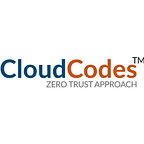Common Mistakes that Lead Enterprises to the SaaS Security Data Breach — Have a Look!
SaaS Security Data Breach
The onus of sensitive data protection is a shared responsibility of the enterprise and the cloud service provider. Of course, the service providers have to see that their client's data stay safe and secure. If they are not responsible, then the clients should find it elsewhere. But most of the service providers do not follow some rigid rules that lead to SaaS security data breach incidences & SaaS security risks. Using a shared environment to cut down on costs is one fine example, and in the long run, such practices tend to harm both the service providers and the enterprises.
Common Mistakes of a SaaS Security Data Breach
If the customer data has to be secured, the cloud service providers need to stay away from the following practices:
1. Poor Authentication Practices
There are many tools available for authentication practices, but Multi-Factor Authentication (MFA) is one of the best among these. Two-factor authentication (2FA) is the most followed practice, but sticking to it is not wise. There are a host of combinations available, and the requirement of every enterprise varies. It is imperative to delve into the varying factors that go into the authentication of a particular enterprise and customize the authentication practices to suit the client’s needs, resulting in a more secure overall infrastructure.
2. Lack of Data Integrity
Since the service providers stack all of the clients in the same database, there has to be appropriate segregation between the client data to ensure anonymity. One client’s data should not be accessible by another client, and that has to be the topmost priority of the cloud service provider. Security should be the foremost question that any client has to put forth to the service provider. In turn, they have to be prepared to handle the problems with genuine answers, so that trust is built in the initial stages itself to augment a strong partnership. The segmentation provided by the service provider should be strong enough to give protection to each client database, and at the same time, the integrity of the whole structure has to be maintained.
3. Bad Applications
As we mentioned earlier, data security has to be a shared responsibility between the enterprise and the cloud service provider. But many a time, the client extends the web-based apps through the cloud services, which could threaten the entire cloud database. When enterprises utilize cloud services without keeping the service providers in the loop, they create risks to the cloud’s whole lot of data. It is always better for the service providers to understand each application of their client, resulting in decreased cloud security risks. Also, training on the client application will lead to a better partnership between the service provider and the enterprise and help them understand each other’s requirements and business needs.
4. Poor Employee Training
When any enterprise builds its infrastructure, they certainly hire new employees. Training programs are essential for new employees hired because they need to know about the possible cybersecurity threats and how they can be overcome by following some routine practices. It helps them to be vigilant and allows the enterprise to speed up its cloud security protocols.
5. Replicating Accounts and Passwords
Weak passwords and reusing them across all applications are the common mistakes the employees make when logging on to their platforms. It not only invites trouble for the enterprises but also makes hacking easier for cybercriminals. The best option is to diversify the account names and passwords. Employees should be encouraged to have strong passwords like passphrases, and the accounts should be unique. Get the employees to change their passwords every 30–90 days for better security and safeguarding the enterprise’s crucial data.
